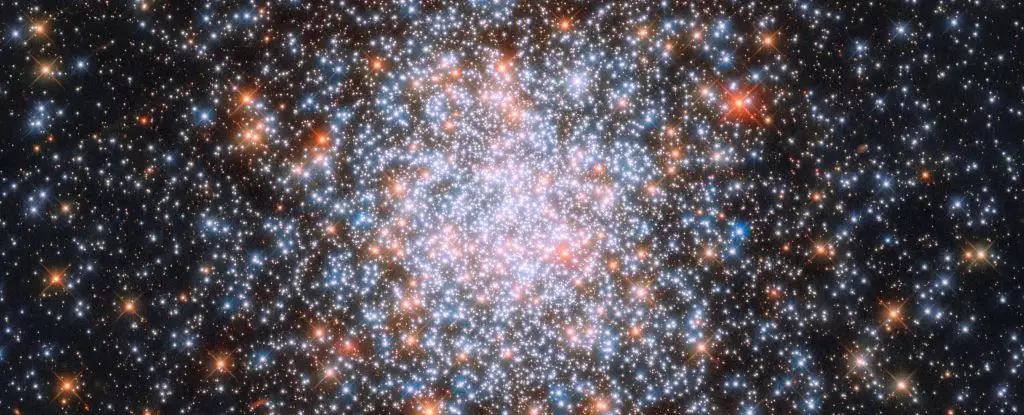The earliest epoch of our Universe remains a tantalizing mystery, shrouded in darkness and elusive signals. Yet, scientists are on the cusp of piercing this cosmic veil, not by spotting the first stars directly, but by deciphering the faint whispers of hydrogen gas from the infant Universe. Neutral hydrogen, abundant about 100 million years after the Big Bang, emits what is called the 21-centimeter signal—a subtle radio wave that carries encoded information about the earliest cosmic bodies. Understanding this signature could revolutionize our knowledge of how the Universe transitioned from utter darkness to a cosmos teeming with stars.
This epoch, often termed the “Cosmic Dawn,” is where theory grapples with sparse observational data. The first stars, often hypothesized to be gargantuan in size and ephemeral in existence, left no direct footprints easily traceable by telescopes. Instead, cosmologists and astronomers have turned to indirect methods: the faint radio emissions from distant hydrogen clouds that were influenced by the radiation of the very first stars. Untangling this signal is a technological and intellectual challenge, but new advancements in radio astronomy are propelling us closer to success.
Why the First Stars Were Nearly Invisible
The initial generation of stars, known as Population III stars, formed from pristine hydrogen and helium gas, untouched by heavier elements forged inside later stars. Many theoretical models suggest these pioneers were colossal—sometimes thousands of times the mass of our Sun—and burned through their fuel at dizzying speeds. Their brief lifespans, perhaps only a few million years, allowed little time for their detection. Moreover, once they exploded as supernovae or collapsed into black holes, their direct light faded, leaving behind only subtle alterations in the intergalactic medium.
This scenario paints a grim picture for traditional astronomy, which relies heavily on starlight. Instead, researchers have to glean insights by studying the cosmic landscape that was shaped by these enormous furnaces. The 21-centimeter hydrogen line emerges as a potent tool in this quest because it is sensitive to cosmic conditions affected by radiation from the first stars. Subtle changes in this signal could reveal their mass, distribution, and even their violent deaths.
The 21-Centimeter Signal: A Cosmic Rosetta Stone
The fascinating physics behind the 21-centimeter line involves the hyperfine transition of neutral hydrogen atoms, specifically the flip in orientation of their electron spins relative to the proton’s spin. This produces radio waves that, although incredibly faint, permeate the Universe. By observing how this signal is absorbed or emitted at different wavelengths and epochs, astronomers can infer the temperature and ionization state of hydrogen gas billions of years ago.
What makes this signal especially promising is its sensitivity to the radiation fields produced by the first stars. Ultraviolet light from these stars affects hydrogen atoms, changing the intensity of the 21-centimeter signal. Furthermore, X-rays stemming from the remnants of massive stars—such as neutron stars or black holes in binary systems—also influence this radio wave in measurable ways. Incorporating these interactions unlocks a more refined understanding of the earliest cosmic conditions.
Advances in Simulation and Observation
Recent research spearheaded by teams at the University of Cambridge and the Kavli Institute for Cosmology has made significant headway in modeling the complicated interaction of stellar radiation and the 21-centimeter signal. By integrating ultraviolet and, crucially, X-ray emissions emanating from the deaths of massive stars, simulation results now offer a roadmap for what astronomers should expect in data from cutting-edge instruments.
Projects like the Square Kilometer Array (SKA) and the Radio Experiment for the Analysis of Cosmic Hydrogen (REACH) are designed to detect this faint radio signature with unprecedented sensitivity. Although these telescopes remain under construction or in early stages of operation, the theoretical framework delivered by these simulations ensures that when data is acquired, astronomers can confidently interpret indications of the very first stellar generation.
Acknowledging the complexity of this task is vital. Past models often neglected the role of X-ray binaries formed post-stellar death, leading to incomplete or skewed predictions. Incorporating these sources brings forth a richer, more realistic picture of the early Universe’s heating and ionization processes. This painstaking work moves the community beyond guesswork toward tangible observables.
A Transformational Moment in Cosmology
The promise of directly probing the masses and lifespans of the earliest stars through the 21-centimeter signal feels like an astonishing leap in cosmic archaeology. Unlocking these secrets could redefine core assumptions about star formation, galactic evolution, and the interplay between matter and radiation during the Universe’s formative ages. It is an exhilarating moment when theory is converging with technology capable of transcending current limits.
Yet, caution tempers optimism. The fidelity of future detections depends on overcoming monumental technical challenges, such as filtering out foreground noise from our Milky Way and Earthly radio interference. More fundamentally, scientific interpretations must account for uncertainties and alternative explanations, keeping the strive for rigor balanced with excitement.
Ultimately, identifying signatures of the Universe’s first stars would be a profound milestone, providing insights not just into how stars formed but how complex cosmic structures—including potential habitats for life—came into existence. The faint glow of hydrogen’s 21-centimeter signal beckons as the key to uncovering our cosmic origins.

